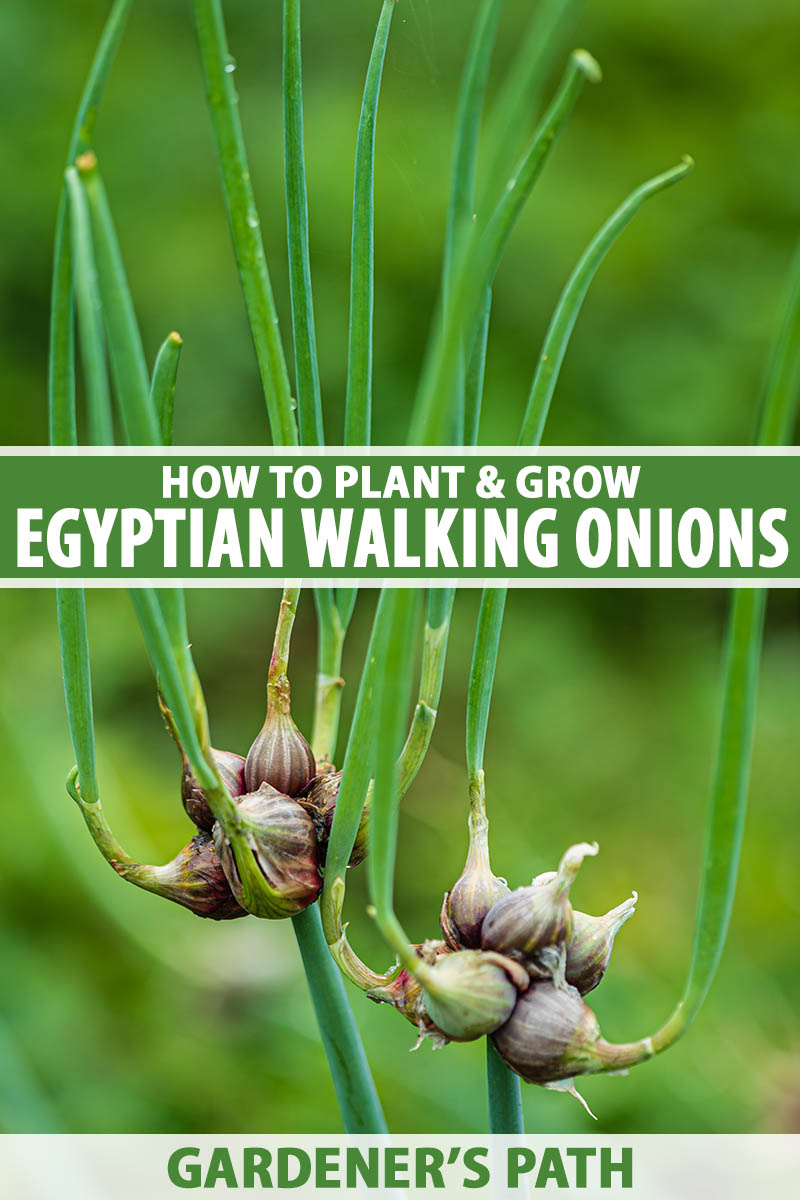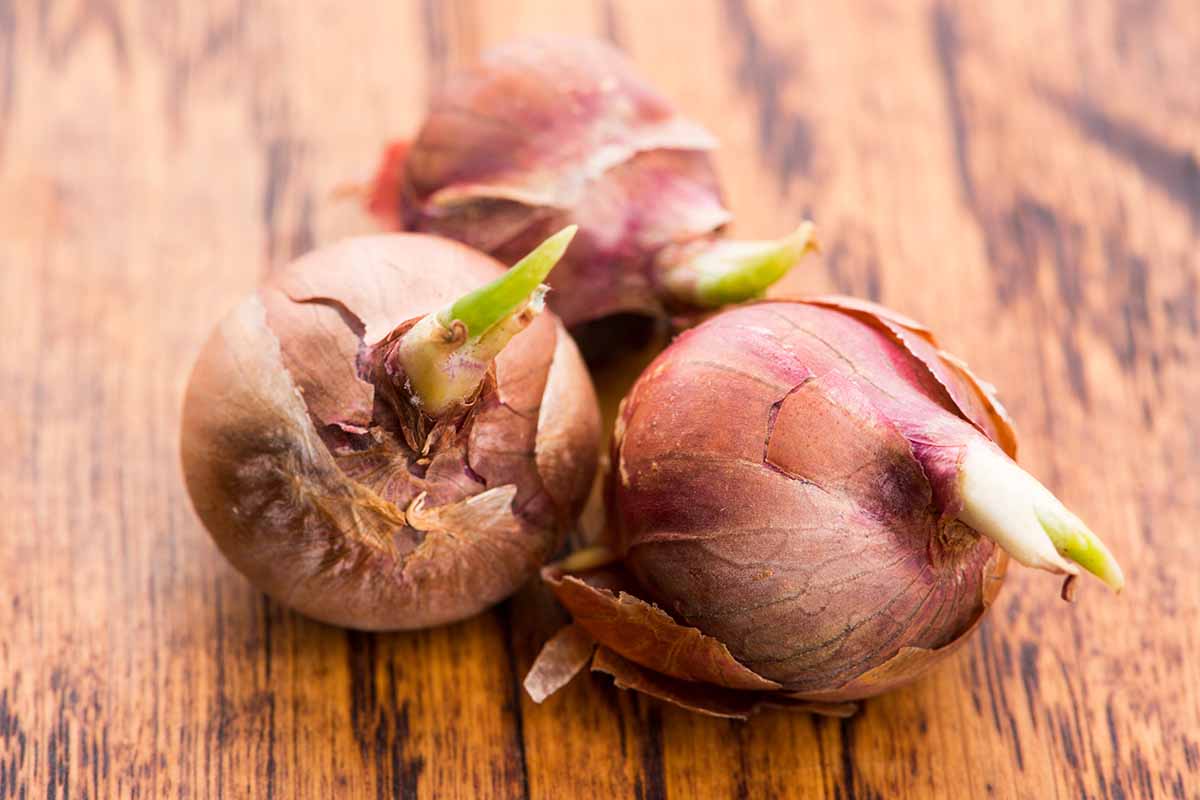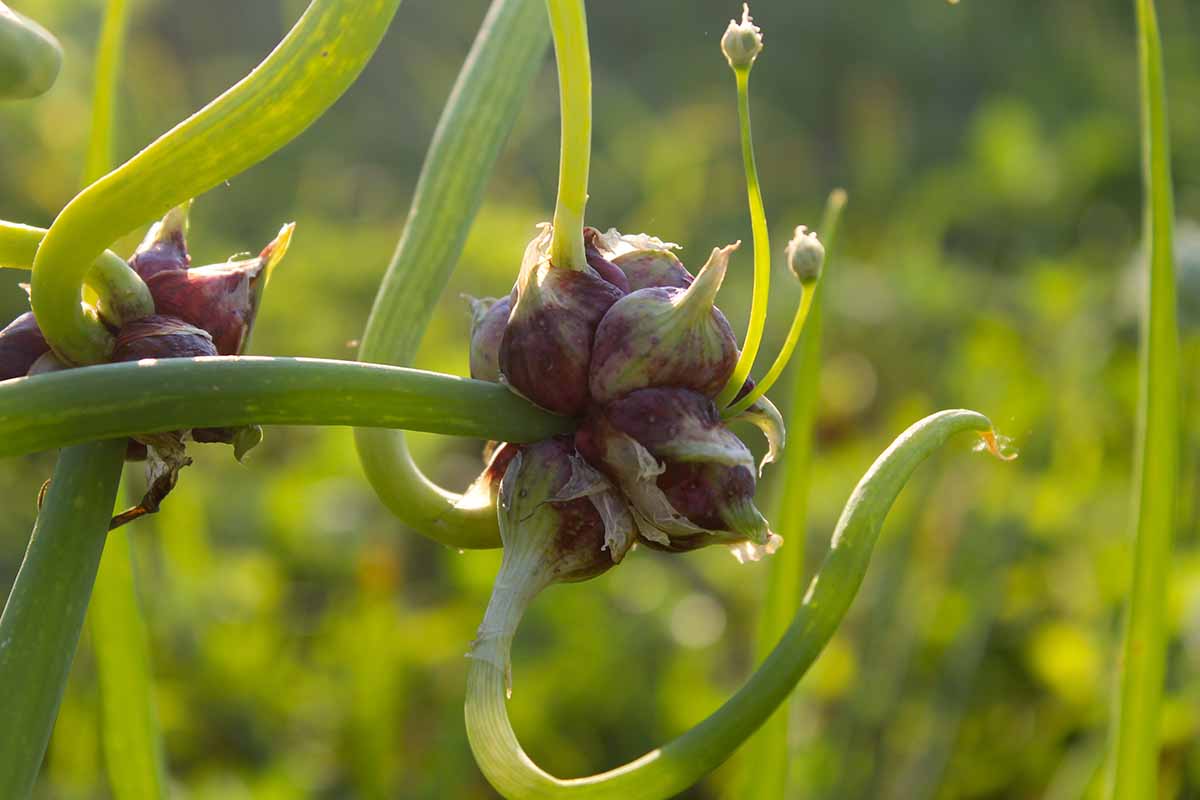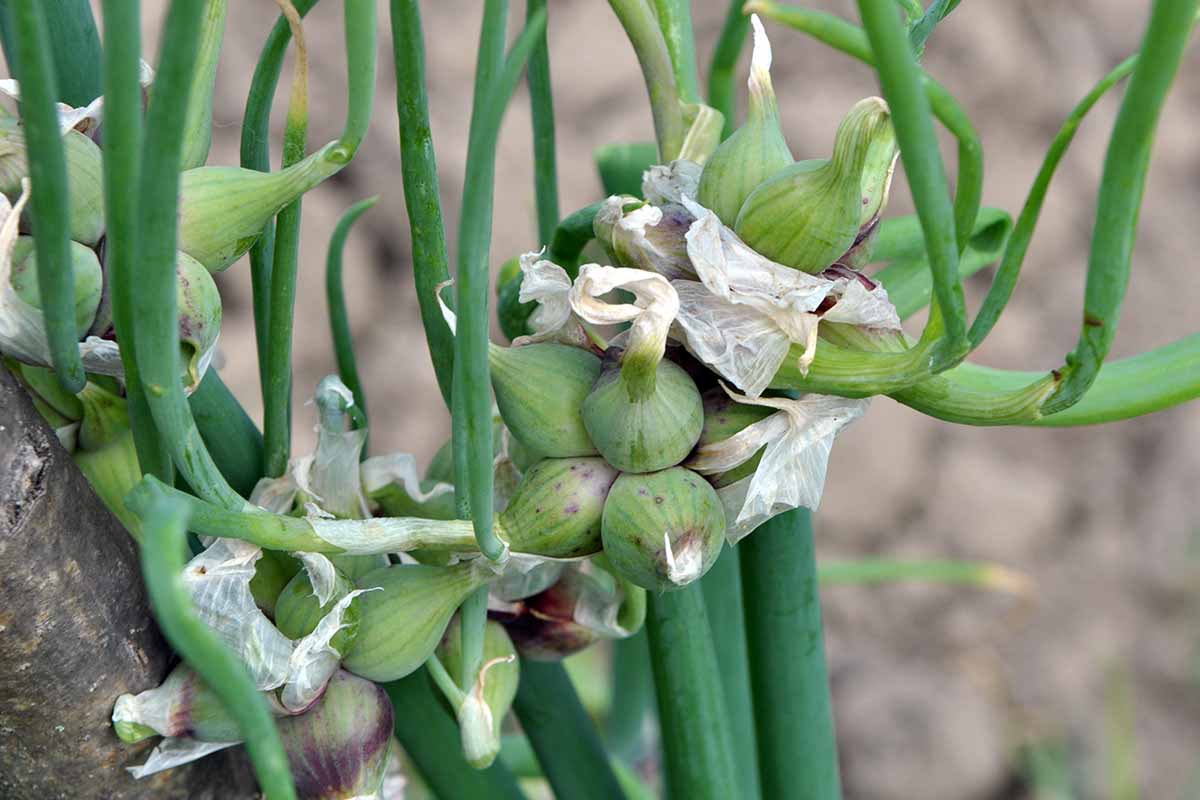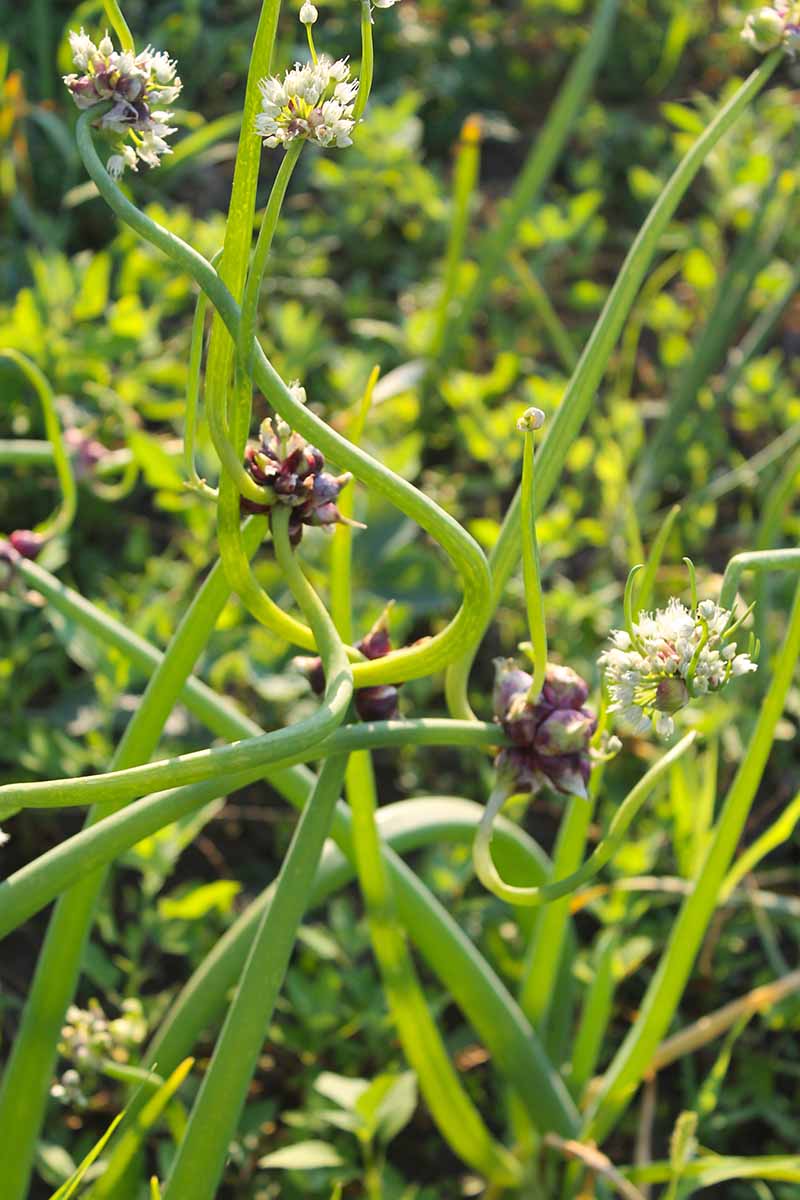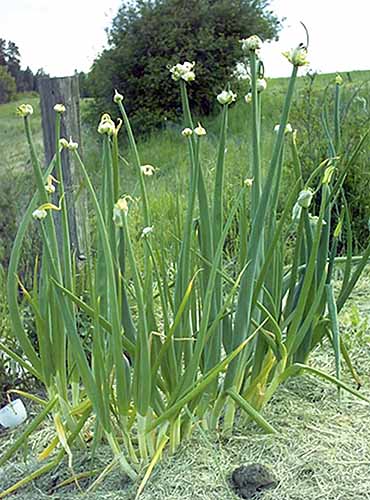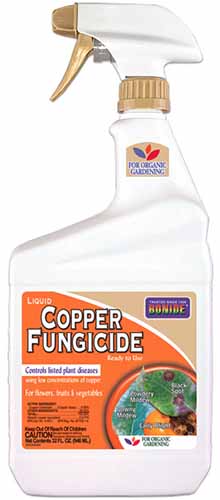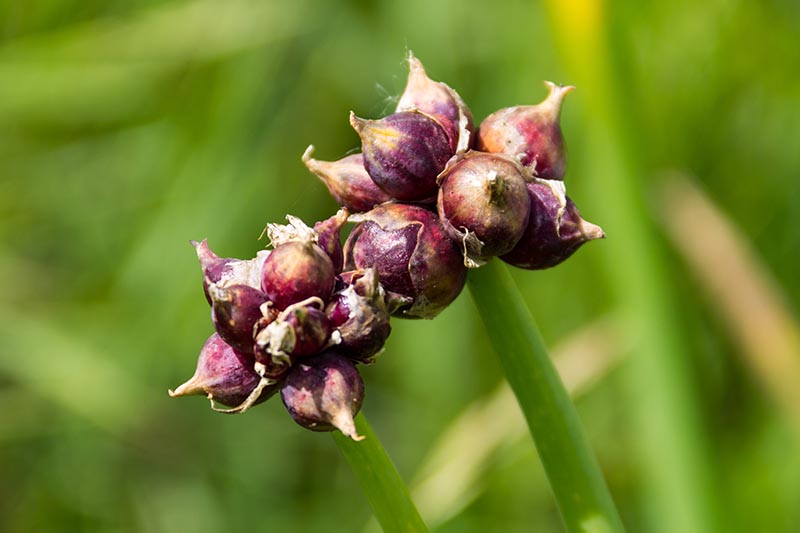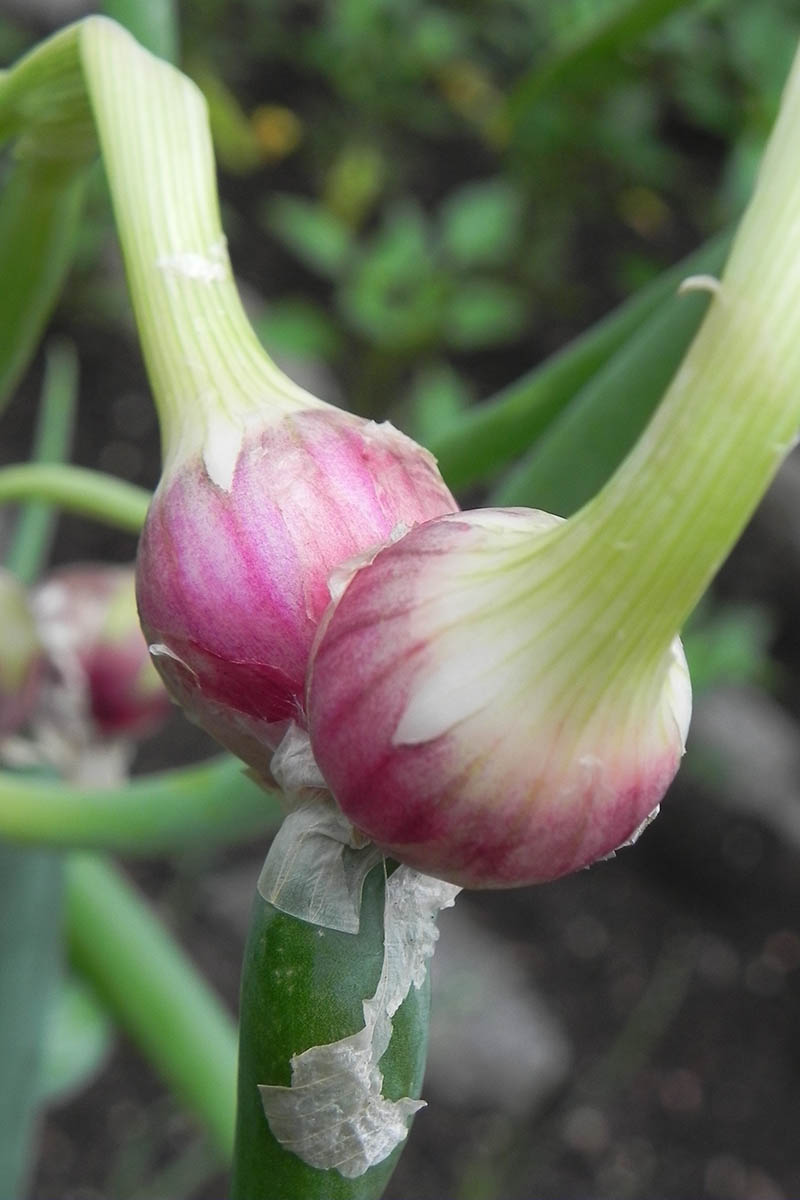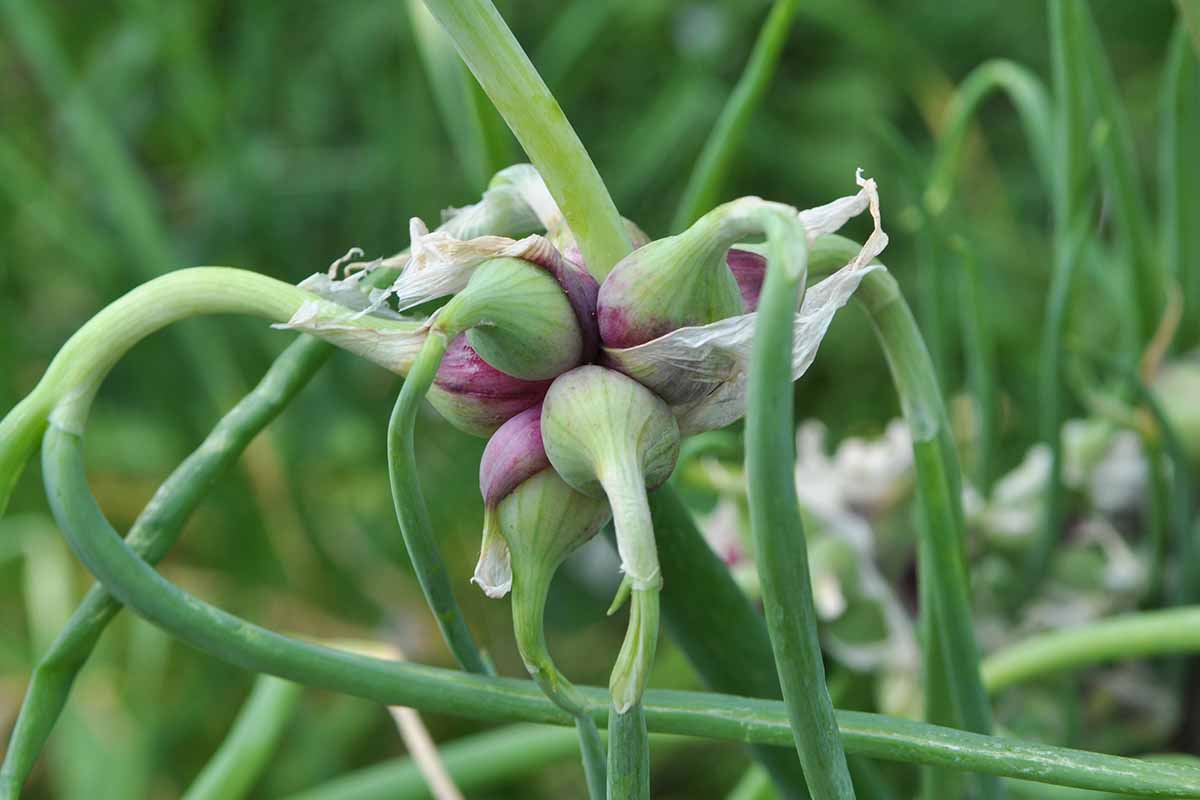He was a kind person who seemed more at ease with the plants in his garden than the people around him so, naturally, we got along famously. We link to vendors to help you find relevant products. If you buy from one of our links, we may earn a commission. This is an awesome allium addition to any garden, as long as you’ve got room for a plant that likes to grow and spread while offering a spicy onion flavor. Let’s skip the pleasantries and the getting-to-know-you’s – frequent readers know I like to prattle on but this time I’m not going to do it. Nope. Not a single extra word… And don’t worry, I promise you there will be no more than three awful jokes about Egyptian walking onions in this guide. Probably not, anyway.
What Are Egyptian Walking Onions?
The Egyptian walking onion is a hybrid of a bulb type and the Welsh bunching onion, and they’re often called walking, tree, or top-setting onions due to how they spread and propagate. Formerly classified as Allium cepa var. viviparum, bulbiferum, or proliferum, these are now described as a hybrid, A. x proliferum. While this allium produces the fat, tasty bulb we associate with all onions, it also creates miniature “onions” at the end of long, green stalks that are called “topsets” or “bulblets.” These topsets are edible and quite tasty, with a noteworthy kick in their flavor that tends toward something a few degrees south of the border. While Egyptian walking onions can spread further and further underground to form a massive clump in your garden, their main method of propagation is to spread via these topsets. When the topsets grow too heavy, the hollow green stalks will collapse to the ground. Once they’re touching the soil, these will take root and establish themselves as new individual plants. Now you know why they’re called “walking onions,” and you get to show off that knowledge the next time they’re mentioned on Jeopardy! Unfortunately, these plants have no special attachment to Egypt outside of their habit of walking like the inhabitants of that land…. I’m going to spare our readers any attempt at making a joke about onion mummies (mummions? oniommies?) and move us forward to their cultivation.
Propagation
You have several options when it comes to propagating these plants, and this is literally the easiest type of onion that I’ve ever tried to grow in the garden. Let’s take a look.
From Topsets
Once you’ve planted your Egyptian walking onions in the garden and they’ve established themselves, they will freely provide you with as many baby bulblets as you could possibly want. When the topsets grow heavy enough in the late summer and fall, the stalks will bend over from the weight and drop to the soil below. You can also remove those topsets and plant them wherever you like if you don’t want them spreading around your garden of their own accord, or take a few from a friend that already has some growing in the garden. Space them about six inches apart, planted about two inches deep. If you like a tidy and orderly garden bed, you can opt to give them lots of space, or if you want them to grow less formally you can pretty much ignore them and let them spread naturally at will with equal success. Water them in at planting time if you’re going the extra mile and giving them a little extra help. These topsets will grow if you let them, wherever they land, producing new plants for you to enjoy in your garden. If you do not want volunteers sprouting around the garden, make sure to cut them away instead before they fall and eat ‘em up.
From Divisions
Egyptian walking onions are like many perennial plants that benefit from dividing every few years in the fall. It’s the same process that you’d use with most other perennial plants – dig them up and lift them out of the ground, and chop them into a few pieces. It’s better to divide into a few generously-sized divisions rather than splitting off as many little ones as you can get, to start new clumps. Plant the divisions wherever you want to have more of them. Transplant at the same depth they were growing before, cover with some dirt (these are onions, they only need dirt, not soil), and water them in, watering again as needed for a week or two until established. In all types of planting, you want to make sure the bulblets are just barely covered with soil. Er, dirt. Keep them watered but allow them to dry out between waterings – don’t feel obligated to fertilize these plants – they can make do just fine with the nutrients existing in the soil they’re planted in. If you’re the helicopter plant parent, you can amend the soil with some good compost, but make sure you let your baby onions grow and walk away from the nest at their own pace. Before you know it, they’ll go off to onion college and have onion babies and you’ll be listening to my own cover of “Cat’s in the Cradle,” except it’s called “Topsets in the Soil” and instead of Harry Chapin breaking your heart, it’ll be me making you wish you had a set of ear plugs handy.
How to Grow
As forgiving as any allium, A. x proliferum only require soil that is well-drained and not completely starved of nutrients. These mobile alliums don’t require extra watering or care in general, and can get by with a bare minimum of effort on the part of the gardener. Ensure they’re getting about an inch of rain every week, and keep them in as sunny a location as you can. They can grow happily in some light shade but are at their best with as much sun as they can drink up. I’m a firm believer that most plants are happiest when they’ve got a few weeds growing around them, as long as those weeds aren’t absolutely crowding out your intentionally planted specimens. Plants can share their nutrients in a mycological network and, in a word – communicate – with one another about pests and dangers they are experiencing. Give your walking onions a few friends by allowing a handful of scattered weeds to share the planting area with them. I can’t promise your onions will be more vigorous or delicious, but I can definitely guarantee everybody involved will be happier for your (lack of) effort in removing that handful of annoying weeds. If you do not want your onions to grow outside of the area you’ve given them, you’ve got to harvest them every time a topset begins to form. These guys are so very eager to take off and spread wherever they can, so you’ve got to be like Cruella de Vil and harvest as many baby bulblets as you can before they reach mature size. To encourage bigger bulb growth underground you can also snip the developing topsets. But then you’d remove the “walking” aspect of these plants – and where’s the fun in that?!
Growing Tips
Give your plants space to grow, and divide to ensure a bountiful future harvest.Fertilization and heavy-handed care is not necessary!Remove bulblets before they drop if you don’t want them to spread beyond your designated spaces.
These critters in your garden might bother your onions, but it’s very unusual for that to happen, so we can consider these instances rare exceptions rather than something we need to worry about at all. There are no cultivars to select that are available commercially beyond the species plant. It’s simplicity in the best way, a distinct and flavorful onion that walks the walk and goes by a single name. In the future, there may be some fancy cross-breeding attempts, but right now, this is a plant you’re only going to find listed as “Egyptian walking onion,” or one of its synonyms. Egyptian Walking Onion Plants are available in packs of five from Burpee.
Managing Pests and Disease
These plants are mostly untouched by pests, and fungal issues are rare. But remember line 7 of the Gardener’s Creed: nothing in your garden is immune to a hungry deer or a hungry rabbit.
Onion Thrips
This is your typical veggie pest, an annoying insect that bites into your Egyptian walking onions and sucks out the vital liquids inside. Overall, you’re not going to need to worry about Thrips tabaci since it only poses a threat to young plants. For adult plants, it’s a nuisance at best, and you can trust that a natural predator will find its way to your walking onions and take care of the thrips before they’re too far gone. In good conscience, I can’t suggest a pesticide for treating these thrips since any type of chemical pesticide tends to kill indiscriminately. If you notice an infection of thrips, wash them away with a blast from your garden hose, or smudge them out of existence between your fingers. Or, in a perfect world, allow them to feed on your walking onions while knowing they’ll never cause serious harm to mature plants. You can learn more about thrips in our guide.
Fungal Disease
You might encounter a handful of fungal problems with your onions, but these issues are really… err, non-issues, as long as you aren’t overwatering. If your plants are getting about one inch of water a week, they’re going to be happy. No need to overwater! However, if you’re abiding by these very flexible guidelines, and you’re experiencing a very rainy couple of weeks, you might run into some splotchy or spotted leaves.
The Stalks
Cut ‘em when they’re green and fresh for a pungent, spicy option to add to your meals. It’s best to pick these just before you’re ready to use them. However if you’ve got an itchy trigger finger and want to spray these problems into oblivion, I’d recommend Bonide Copper Fungicide as my solution of choice. Bonide Copper Fungicide Bottles containing 16 ounces of concentrate are available from Arbico Organics. Dilute and apply as per the directions on the bottle, and you’ll soon find any fungal problems disappearing in very short order.
Harvesting
Every part of this plant is edible. The only limitation is in what your plant currently has to offer.
The Bulblets
Snip off the bulblets on top when you wanna eat them, and you’re good. Keep in mind that the more topsets you’re harvesting, the fewer new Egyptian walking onion plants you’ll have in your garden next year. Be sure to let a few fall to the ground to reseed naturally, or plant them intentionally as described above.
The Bulbs
Underground bulbs can be harvested and eaten as well, of course. These will be about the size of a shallot when they’re ready to dig up and harvest in late summer or fall. When you’re in there dividing, reserve a few of the large ones for eating as well. But don’t pick too many if you want a healthy harvest the next year. Learn more about harvesting onions in our guide.
Preserving and Storage
Cut stalks as well as bulblets and bulbs can be stored in the fridge for a few days. Be sure to wash them just before use. Introducing moisture prior to storage can result in rot more quickly. Mature bulbs can also be cured in a warm location with good ventilation just like what you’d do with traditional bulb types, for longer storage. Bulblets and chopped bulbs can be frozen after chopping and peeling, or dehydrated. Or try pickling the bulblets for a tasty treat that’s great in cocktails or as a snack, similar to what you might do with pearl onions. Our guide to onion storage has more tips.
Recipes and Cooking Ideas
I’ve had the best luck garnishing meals and cooking with thinner slivers of the greens rather than using chunkier cuts. They can be a little tough and fibrous, so cutting them into smaller slices is my middle-ground solution. Don’t tell her, but I still prefer the stalks to be cut into smaller and tinier pieces. You can use the bulblets exactly as you would use regular bulbs, albeit a smaller version. A few times I’ve cooked the bulblets wholly intact and said to myself, “Let’s see what happens!” and the results were pretty unpredictable, but always tasty. Garlic Press I tend to put it into the frying pan while my food is cooking, but you can press and add these at any point and have success in your recipe.
Quick Reference Growing Guide
Walk Like An Egyptian
Easy to grow and virtually maintenance free, Egyptian walking onions provide both ornamental interest in the garden and a tasty addition to your culinary adventures. Are you growing these alliums? Let us know in the comments section below! And for more information about growing other types of onions, have a read of these guides next:
How to Plant and Grow Spring OnionsHow to Plant and Grow ScallionsHow to Plant and Grow Bulb Onions
